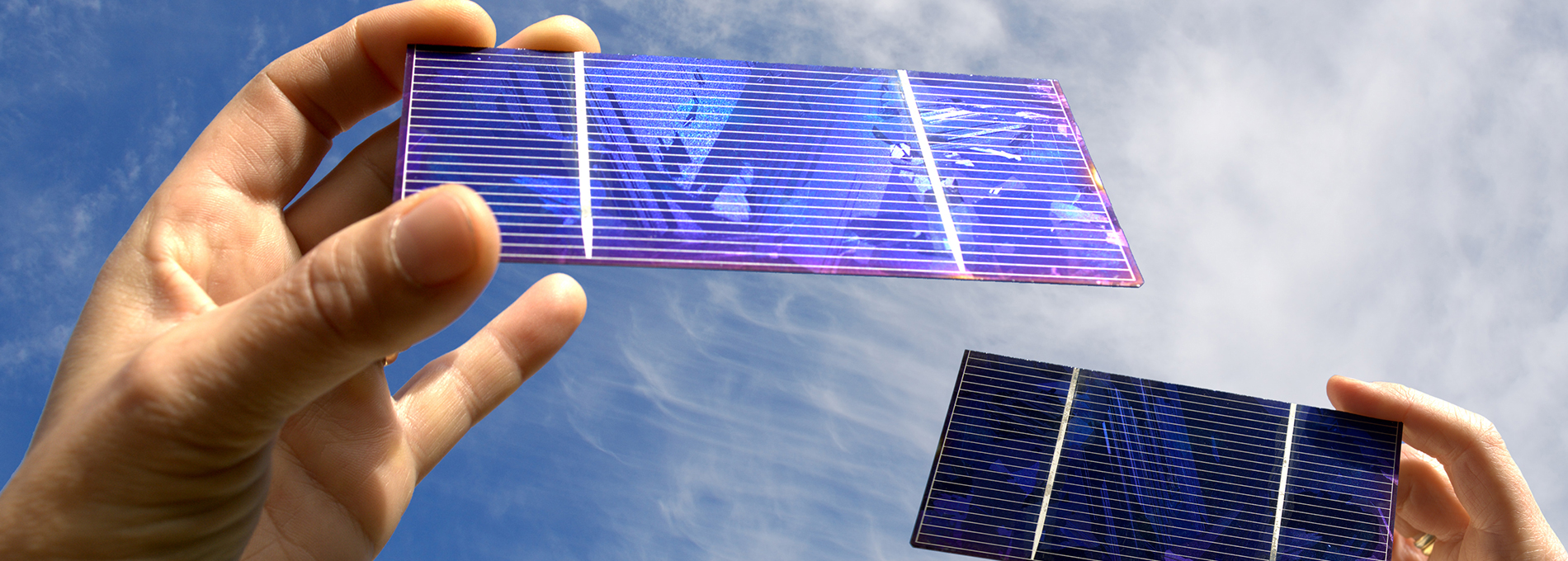
Photovoltaics
The Science behind Solar Modules: Photovoltaics
Solar panels rely on a constantly developing technology, photovoltaics, that enables them to transform the energy in sunlight to electricity. This technology is rather simple, but very effective. Two different applicable types of solar cells exist:
1 The monocrystalline, recognized by its black colour
2 The polycrystalline, recognized by its blue colour
While there are differences between the two, it is not of major importance for understanding the technology behind, which is why we will not delve into further detail. However, please do keep in mind that research and development efforts have discovered a new technology, the so-called Thin Film Cells, that are cheaper to produce and with greater applicative capabilities, but with a still-too-unstable production efficiency for commercial use. Below, we illustrate how the process of generating solar power applying current technology works.
The core of solar cells are constructed by silicone, which in turn is manufactured by quartz sand, making them inexpensive to produce. To break it down, there are two different layers of silicone in a solar cell, a so-called N-type and a P-type. Simply put, the N-type has a surplus of electrons and the P-type has a deficit. When the sun’s photons pass through the antireflection coating, which is the glass on top of the solar cell, it passes on its energy to the N-type silicon that releases an electron that will be absorbed by the P-type silicon. The electron leaves a hole behind that will be filled out by an electron from a neighbouring atom. As this happens, electricity begins to flow in the circuit, which the solar cell is connected to.
The electricity created is of the type DC, as the electrons only move in one direction through the solar cell. Consequently, it needs to be inverted to AC and 240 volts that can be utilized on a commercial scale.
However, the power generated by a single solar cell is very low, and therefore has to be connected into larger modules of solar cells, which in turn together can produce the necessary power output.
